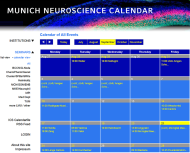Signal replicas make a flexible sensor
New study by GSN Faculty members Dr. Boris Chagnaud and Prof. Hans Straka, together with PhD student Roberto Banchi
11.09.2015
LMU researchers affiliated to the Graduate School of Systemic Neuroscience have shown how signals from the spinal cord adjust the sensitivity of hair cells in the inner ear to accommodate shifts in head position associated with active locomotion – thus ensuring that balance is maintained.
In collaboration with Dr. John Simmers at the Centre national de la recherche scientifique (CNRS) at the University of Bordeaux, neurobiologists Dr. Boris Chagnaud, Roberto Banchi and Prof. Hans Straka at LMU’s Department of Biology II, have now shown, for the first time, how this feat is achieved. Their findings reveal that cells in the spinal cord which generate the rhythmic patterns of neural and muscle activity required for locomotion also adaptively alter the sensitivity of the hair cells in the VO, enabling them to respond appropriately to the broad range of incoming signal amplitudes. The results are reported in the online journal “Nature Communications”. As Boris Chagnaud points out, “we are not really aware of what movement actually involves because our balance organs react immediately to alterations in posture and head position. The hair cells, which detect the resulting changes in fluid flow in the semicircular canals in the inner ear, enable us to keep our balance without any conscious effort.”
The group now intends to study whether all the hair cells in the inner ear also respond to efferent information emanating from the spinal cord or whether the VO possess subpopulations of hair cells that are specialized for reception of impulses that signal either fast or slow movements.
(Nature Communications 2015)





